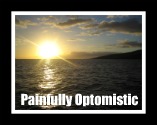I am by no means an expert. I’m still learning myself! But I wanted to share what I’ve learned because I think anyone can learn to shoot in manual and it doesn’t have to be some kind of mystery or crazy math problem. Just take a little reading and lots of trial and error.
I have a Nikon d3100. It’s what they call a “beginner level dSLR”. I’m currently mainly using my kit lens, although I plan on getting a AF-S Nikkor 35mm f/1.8G DX lens soon! (UPDATE: Got it and LOVE it!) I’ve only had my camera since November, but after reading tutorial after tutorial, I’m now strictly shooting in manual mode.
I’m writing this assuming you have read your manual and know where all of the controls are. If you don’t, go read your manual. If you still don’t, do some Googling and then come back ![]()
Step 1: Turn your ISO down to 100. This is where you always want to begin. The lower the ISO, the less noise or grain your photo will have.
Step 2: Set your aperture. The lower the number, the blurrier the background will be around your focal point. The larger the number, the more of the photo will be in focus. This is usually most important to me, so I do this before the next step. If you are shooting a running child, ball game, etc., you may want to reverse this step and the next.
Step 3: What I am constantly adjusting for every photo...
Shutter speed is basically how fast your camera takes a picture, divided into fractions of a second. 1/15 of a second is slow, 1/125 of a second is fast. The slower the shutter speed, the more light it lets in. The faster it is, the less light it lets in. The slower the shutter speed is, the less open (larger number) your aperture has to be. The faster the shutter speed is, the more open (smaller number) your aperture has to be.
Before I adjust the shutter speed, I put my eye to the viewfinder. I frame the photo first, and then set my focal point to where I am going to want the photo to be most in focus (always on an eye if it’s of a person). Then I look at the
If my exposure meter was at 0 but the photo is blurry, it means that my subject was moving too quickly for the shutter to freeze it, or that the camera was
There are a lot of other aspects, such as white balance, that you can and should learn about and take into consideration when shooting in manual, but those are the basics.
If this helped you at all, or it didn’t, or you think I need to re-word something, or you think this post needs pictures and illustrations badly, or you have a question, please let me know!










1 comment:
Very helpful Stephanie :)
Thank You.
I'm still slooooowly getting to grips with my camera.
Post a Comment